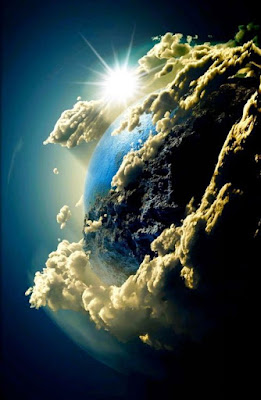It is now known that at the centre of every raindrop is an impurity, a particle of dust, soot, clay etc. It is impossible for rainfall to take place from pure water.
Naturally occurring particles in the sky help trigger rainfall. Sometimes particles have to be introduced artificially into clouds to cause rainfall. This is called Cloud Seeding
There are several ways seeding is carried out. Modern techniques involve introduction of various types of materials particle matter into the clouds using ground based particle generators, rockets, artillery shells or dropping from aircraft.
Now accepted as an effective way across the world, to modify weather and help stimulate rainfall and snowfall. Materials used vary but include, dry ice (solid carbon dioxide), sea salt, silver and potassium iodide etc.
Ridiculed by modern science and frowned upon by many as witchcraft, until recently cloud seeding has been carried out successfully for thousands of years across the world.
One of the practices used in India even nowadays, is called a Havan*.
It took a wise scientist, my teacher and friend Dr. Rajendra Jagdale to connect the dots between science and tradition and explained why people performed Havans.
Indians, Chinese, European, native Americans, all had similar practices. A fire, fed by combustible materials charged with materials that generated, soot etc, chanting, prayers and sometimes dancing (Rain-dance).
The reason is now not far to understand that a Havan often worked is, because the fires fed by wood, ghee and other combustible materials threw up particles of soot and dust into the sky. These particles would often ascend thousands of metres into the atmosphere and into clouds causing them to form raindrops and bring rain down.
 Many people who do not understand the mechanics, just perform a havan for rainfall at anytime and usually indoors and are often disappointed. The wise men are successful because they studied the sky, wind etc. and then chose the right time to seed the clouds by the havan to help trigger rainfall.
Many people who do not understand the mechanics, just perform a havan for rainfall at anytime and usually indoors and are often disappointed. The wise men are successful because they studied the sky, wind etc. and then chose the right time to seed the clouds by the havan to help trigger rainfall.I too like other 'scientific minds' and the 'educated', scoffed at ancient rituals and traditions, calling them mere mumbo-jumbo, and silly superstitions worthy only of a laugh.
Everyday I learn about many ancient wisdom and traditional practices, I now feel humbled and also foolish for keeping a closed or prejudiced mind.
Just because we do not understand something does not mean it is untrue or irrelevant.
Maybe you too should stop laughing.
________________________________
*Havan, is a Vedic tradition and is also called Homa or Yajna or Agnihotri
There is some controversy of excessive use of cloud seeding, leading to use or misuse of this and other weather modification systems.
Dr. Raja Marathe, a highly reputed scientist has set up his own low cost rain seeding project in Nanded, Maharashtra, India with good success. Click here for more information:










